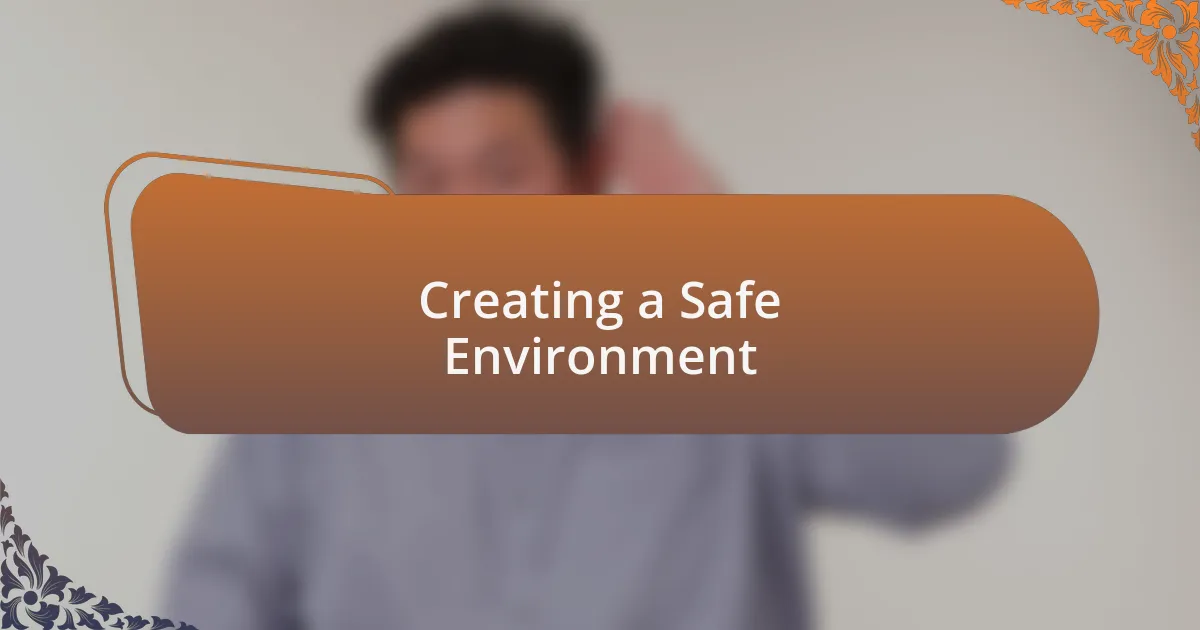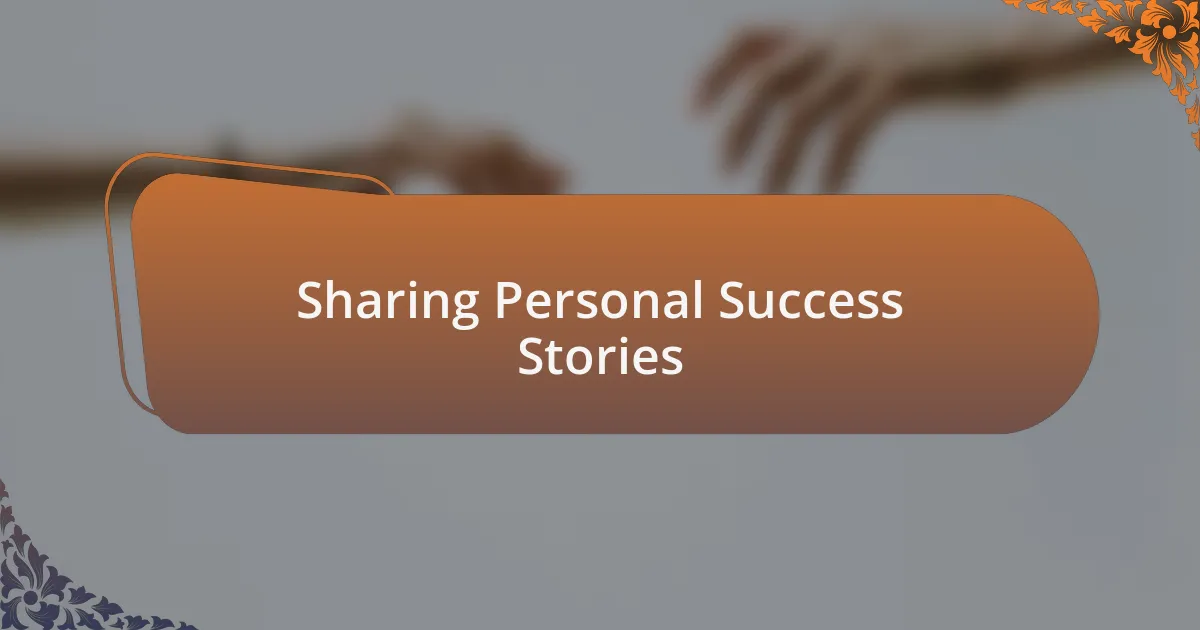Key takeaways:
- Selective mutism is an anxiety disorder affecting children’s social interactions, requiring empathy and a supportive environment to encourage communication.
- Gradual exposure is essential; introducing social situations slowly helps children build confidence in their ability to speak.
- Creating a safe environment, with familiar objects and positive reinforcement, fosters emotional security and encourages children to express themselves.
- Tracking progress and being adaptable in techniques ensures tailored support for each child’s unique journey toward overcoming challenges.

Understanding Selective Mutism
Selective mutism is often misunderstood, yet it is essential to recognize that it’s more than just shyness; it’s an anxiety disorder that can significantly impact a child’s social interactions. I recall a moment when I saw a child play happily in a group but freeze during circle time, refusing to speak. What’s going on in their mind at that moment? It’s a mix of fear and a desire to connect but feeling trapped in silence.
The condition typically manifests in specific settings, such as at school or with unfamiliar people, while the child may speak freely at home. I remember speaking with a parent who shared their frustration when their child would engage in conversations with family members yet clam up in social situations. It’s heartbreaking to see children who want to interact but feel overwhelmed, and it leads to the question: how can we create a supportive environment that encourages them to speak?
Understanding the emotional landscape of a child with selective mutism requires empathy and patience. Each child’s experience is unique, and there can be a deep-seated fear driving their silence. I often find myself pondering how important it is for caregivers to build trust over time, to make a space where children can express themselves without the pressure of immediate verbal communication. When we focus on understanding rather than judgment, we can begin to help these children find their voices.

Importance of Gradual Exposure
Gradual exposure is crucial in helping children with selective mutism find their voices in a gradual and supportive manner. I remember a therapy session where a child began by whispering their name to a trusted adult before eventually speaking in a small group. This small step created a ripple effect, showing them that speaking could lead to connection rather than fear. Can you imagine the sense of accomplishment they felt?
When we take the time to introduce social situations slowly, we give children the opportunity to adjust at their own pace. I once observed a child who would quietly nod their head in agreement but seemed paralyzed when asked to speak. By allowing them to practice in non-threatening settings—like naming a favorite toy or sharing a story—over time, they grew confident enough to voice their thoughts among peers. It’s a beautiful transformation to witness, and it reinforces the idea that every small step is a victory.
The importance of gradual exposure cannot be overstated; it’s a path paved with understanding and patience. I once worked with a parent who felt defeated, struggling to get their child to talk during playdates. We shifted our approach, focusing on familiar settings and familiar faces first. This allowed the child to loosen up, revealing a vibrant personality hidden beneath the silence. How empowering it is to recognize that with each gentle push beyond their comfort zone, we are lighting the way to their self-expression!

Techniques for Starting Gradual Exposure
Starting gradual exposure requires a thoughtful approach. For instance, I remember guiding a child who loved animals but was hesitant to speak about them. We began with simple activities, like drawing their favorite pet first, then building up to sharing those drawings with a trusted friend. This gradual buildup made the concept of speaking feel less daunting and allowed them to associate expression with joy rather than anxiety.
In another scenario, I introduced a “talking jar” during a playdate. Each child took turns pulling out an item from the jar and describing it. Initially, one quiet child just listened and gazed at the object. Gradually, I noticed the same child begin to whisper a few words. I felt such pride watching them dip their toes into conversation in a fun and engaging way. Does that not spark hope that with just the right circumstances, children can blossom?
It’s critical to create an environment where speaking feels safe and rewarding. I once facilitated a small group activity where children expressed themselves through movement instead of words—dancing or acting out ideas. This non-verbal approach helped a particularly anxious child warm up to the group dynamic. After some time, he started to share his thoughts aloud during discussions. The sense of progression was palpable, wasn’t it? Each technique we’ve explored illustrates that starting with what feels comfortable can significantly ease the journey to speaking out.

Creating a Safe Environment
Creating a safe environment is foundational for children with selective mutism. I recall a time when I set up a cozy corner in my classroom, complete with soft cushions and inviting books. It became a sanctuary where children felt they could explore thoughts without judgment. Isn’t it amazing how the right environment can foster a sense of security?
Another effective strategy I employed was incorporating familiar objects. I brought in items that held sentimental value for the children, such as family photos or favorite toys. When a shy child clutched a beloved stuffed animal while participating in a group activity, I noticed their confidence visibly grow. It’s fascinating how a simple object can serve as an emotional anchor, allowing them to reach out and connect.
Lastly, I always emphasize the power of positive reinforcement in creating a safe space. During one session, I offered praise and gentle encouragement when a child attempted to speak up, even if it was just a whisper. Recognizing their efforts made them feel valued and respected. Can you see how small acknowledgments can lead to significant breakthroughs in a child’s willingness to communicate?

Implementing Gradual Exposure Steps
Implementing gradual exposure steps requires careful planning and an understanding of each child’s unique comfort levels. In one instance, I guided a child in my care to say their name to a trusted adult before gradually extending this challenge to speaking with peers. The thrill in their eyes when they successfully shared their name was a testament to how powerful and achievable small steps can be. Have you ever witnessed a child embrace a challenge and transform right before your eyes?
I often start with low-stakes situations, such as having the child make sounds or gestures rather than words, gradually building up to full sentences in comfortable contexts. For instance, I introduced a game where they could communicate through gestures to indicate their favorite toy. This not only alleviated the pressure of verbal communication but also created a playful environment. Isn’t it incredible how incorporating fun can ease anxiety while encouraging engagement?
As I progressed through each step, I made it essential to celebrate every little success—each word spoken or sound made. I vividly remember the excitement of a child whispering their first full sentence; the classroom practically erupted with applause. This reinforces their accomplishments and builds motivation to keep trying. Doesn’t it affirm the idea that every small victory contributes to a larger triumph?
![]()
Tracking Progress and Adjustments
Tracking progress in gradual exposure is crucial for tailoring each child’s journey. I’ve often utilized a simple chart to document milestones—each tick mark representing a small victory, from saying a word to a classmate to sharing a thought in a group. Have you ever seen how visually seeing progress can ignite a child’s confidence? It’s astonishing how a tangible representation of their achievements can boost their motivation and encourage them to try even harder.
Adjustments are an inevitable part of the process, and I always keep an open line of communication with both the child and their caregivers. For example, during one session, I noticed a child becoming increasingly anxious with a specific exposure task. Rather than pushing through, I calmly adjusted the challenge to something they were more comfortable with, which renewed their enthusiasm. Why force a situation when flexibility can lead to better outcomes?
Consistency in reviewing progress provides valuable insights into what works and what doesn’t. In my experience, I regularly reflect on my notes after each session, often discovering patterns or triggers in their responses. This reflection process is enlightening. When I identify these elements, I can modify the approach, ensuring it remains effective and tailored, ultimately guiding the child closer to overcoming their challenges. Isn’t it remarkable how adaptability can lead to breakthroughs?

Sharing Personal Success Stories
Sharing personal success stories can be incredibly uplifting. I recall a parent sharing how their daughter spontaneously spoke to a cashier during a grocery trip. Can you imagine the joy in that moment? It was such a tiny step, yet a monumental leap for her, illustrating how gradual exposure can empower children to face everyday social situations.
One memorable story involved a boy who struggled with speaking in class. After weeks of gradual exposure, he raised his hand to share a comment, and the entire room paused, surprised but supportive. The pride on his face was undeniable. Doesn’t that highlight how our small victories can foster a sense of belonging?
I often encourage sharing these stories within support groups. They create a tapestry of hope, reminding us that progress may look different for everyone but is still significant. Have you ever felt inspired by someone else’s journey? Hearing these testimonies reinforces that no challenge is insurmountable, and it fuels our commitment to continue advocating for understanding and support.